|
Books Should Be Free Loyal Books Free Public Domain Audiobooks & eBook Downloads |
|
|
Books Should Be Free Loyal Books Free Public Domain Audiobooks & eBook Downloads |
|
Adventure Books |
|---|
|
Book type:
Sort by:
View by:
|
By: John Buchan (1875-1940) | |
|---|---|
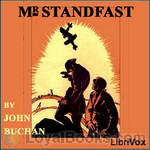 Mr. Standfast
Mr. Standfast
This is the third of Buchan's Richard Hannay novels, following The Thirty-nine Steps and Greenmantle. Set, like Greenmantle, durinig World War I, it deals Brigadier-General Hannay's recall from the Western Front, to engage in espionage, and forced (much to his chagrin) to pose as a pacifist. He becomes a South African conscientious objector, using the name Cornelius Brand. Under the orders of his spymaster, Sir Walter Bullivant, he travels in the book through England to Scotland, back to the Western Front, and ultimately, for the book's denouement, into the Alps... | |
 The Half-Hearted
The Half-Hearted
| |
 Power-House
Power-House
The Power-House is a novel by John Buchan, a thriller set in London, England. It was written in 1913, when it was serialised in Blackwood's Magazine, and it was published in book form in 1916. The narrator is the barrister and Tory MP Edward Leithen, who features in a number of Buchan's novels. The urban setting contrasts with that of its sequel, John Macnab, which is set in the Scottish Highlands. The Power-House of the title is an international anarchist organization led by a rich Englishman named Andrew Lumley... | |
 Three Hostages
Three Hostages
The Three Hostages is the fourth of five Richard Hannay novels. The Richard Hannay novels are action/mystery/spy novels with a James bond feel. This book starts out with Richard Hannay married to Mary Lamington living in Fosse Manor. He is asked to work undercover and figure out who kidnapped three children of prominent people, while Scotland Yard investigate the abductions officially. Different friends help him solve the mystery. It's suspenseful and a fun action packed mystery! - Summary by Kimberly Shoemaker | |
By: John C. Hutcheson (1840-1897) | |
|---|---|
 The Ghost Ship
The Ghost Ship
This book intentionally veers in and out of the supernatural, as the title implies. The officers get more and more bewildered as they work out their position, and yet again encounter the same vessel going in an impossible direction. Having warned you of this, I must say that it is a well-written book about life aboard an ocean-going steamer at about the end of the nineteenth century. | |
 Afloat at Last A Sailor Boy's Log of his Life at Sea
Afloat at Last A Sailor Boy's Log of his Life at Sea
| |
 The Penang Pirate and, The Lost Pinnace
The Penang Pirate and, The Lost Pinnace
| |
 Fritz and Eric The Brother Crusoes
Fritz and Eric The Brother Crusoes
| |
 Bob Strong's Holidays Adrift in the Channel
Bob Strong's Holidays Adrift in the Channel
| |
 Tom Finch's Monkey and How he Dined with the Admiral
Tom Finch's Monkey and How he Dined with the Admiral
| |
By: John Finnemore (1863-1915) | |
|---|---|
 The Wolf Patrol A Tale of Baden-Powell's Boy Scouts
The Wolf Patrol A Tale of Baden-Powell's Boy Scouts
| |
By: John Howell (1788-1863) | |
|---|---|
 The Life and Adventures of Alexander Selkirk
The Life and Adventures of Alexander Selkirk
This work was the true story of Alexander Selkirk (1676 to December 13, 1721), a Scottish sailor who was employed in a number of different trades during his early life. As a young man, Selkirk learned the skills of tanning and shoemaking, and later became a buccaneer (a government-sanctioned pirate) on the Cinque Ports, working his way up to the position of ship's sailing master or navigator. But in the case of Selkirk, his experiences would eventually help him to survive his isolation on a deserted island in the Juan Fernández archipelago, off the coast of Chile, where he spent 52 months before being rescued... | |
By: John Jeffery Farnol (1878-1952) | |
|---|---|
 Broad Highway
Broad Highway
Our hero, Peter Vibart, an Oxford graduate with no means of support but for 10 guineas he has inherited, sets out on a walking tour of the Kent countryside. Along the way, he meets many quaint and adoring characters as well as a few ne’er-do-wells, meets with several disasters and triumphs, and eventually he meets "The Woman," who leads him to even more disasters and triumphs. (Introduction by John Lieder)Proof-listened by Dawn Larsen and BainbridgeCatherine. | |
By: John Kendrick Bangs (1862-1922) | |
|---|---|
 R. Holmes and Co.
R. Holmes and Co.
Raffles Holmes is introduced in these stories as the son of the great Sherlock Holmes. He is also revealed to be the grandson of A.J. Raffles, a gentleman thief pursued by Sherlock Holmes many years earlier. This apparently contradictory family background sets the stage for his colorful and amusing adventures. | |
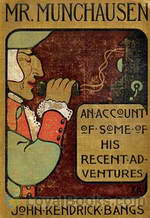 Mr Munchausen
Mr Munchausen
The author has discovered for us in this volume the present stopping place of that famous raconteur of dear comic memory, the late Hieronymous Carl Friederich, sometime Baron Munchausen, and he transmits to us some further adventures of this traveler and veracious relator of merry tales. There are about a dozen of these tales, and, judging by Mr. Bangs' recital of them, the Baron's adventures on this mundane sphere were no more exciting than those he has encountered since taking the ferry across the Styx... | |
 Toppleton's Client
Toppleton's Client
A pre-eminent legal firm gets far more than it bargained for when it hires the son of its late senior partner, Hopkins Toppleton, Sr., simply to retain the illustrious family name on the company masthead. Knowing Jr. is a loose cannon, their strategy is to pack him off to the UK to head up a European branch of the firm - a branch they have no intention of sending work. The unwitting Hopkins Toppleton, Jr. is, however, determined to make his mark. | |
By: John Lang (1816-1864) | |
|---|---|
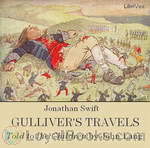 Gulliver's Travels, Told to the Children
Gulliver's Travels, Told to the Children
This is a children's version of Jonathan Swift's novel Gulliver's Travels, from the Told to the Children Series (published in 1910). The children's adventure story covers Gulliver's visits to the lands of Lilliput and Brobdingnag. | |
By: John Lloyd Stephens (1805-1852) | |
|---|---|
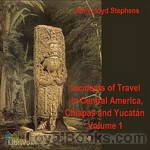 Incidents of Travel in Central America, Chiapas, and Yucatan, Vol. 1
Incidents of Travel in Central America, Chiapas, and Yucatan, Vol. 1
The year is 1838. The scene is the dense Honduran forest along the Copán River. Two men, John Lloyd Stephens and Frederick Catherwood, are about to rediscover Mayan civilization. Their guide, slashing through the rampant growth with his machete, leads them to a structure with steps up the side, shaped like a pyramid. Next they see a stone column, fourteen feet high, sculptured on the front with a portrait of a man, “solemn, stern and well fitted to excite terror,” covered on the sides with hieroglyphics, and with workmanship “equal to the finest monuments of the Egyptians... | |
 Incidents of Travel in Central America, Chiapas, and Yucatán, Vol. 2
Incidents of Travel in Central America, Chiapas, and Yucatán, Vol. 2
The year is 1838. The scene is the dense Honduran forest along the Copán River. Two men, John Lloyd Stephens and Frederick Catherwood, are about to rediscover Mayan civilization. Their guide, slashing through the rampant growth with his machete, leads them to a stone column, fourteen feet high, sculptured on the front with a portrait of a man, “solemn, stern and well fitted to excite terror,” covered on the sides with hieroglyphics, and with workmanship “equal to the finest monuments of the Egyptians... | |
By: John Meade Falkner (1858-1932) | |
|---|---|
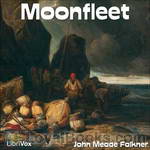 Moonfleet
Moonfleet
The novel is set in a fishing village in Dorset during the mid 18th century. The story concerns a 15 year old orphan boy, John Trenchard, who becomes friends with an older man who turns out to be the leader of a gang of smugglers.One night John chances on the smugglers’ store in the crypt beneath the church. He explores but hides behind a coffin when he hears voices. He finds a locket which contains a parchment, in the coffin belonging to Colonel Mohune. Unfortunately after the visitors leave,... | |
By: John Muir | |
|---|---|
 Travels in Alaska
Travels in Alaska
In 1879 John Muir went to Alaska for the first time. Its stupendous living glaciers aroused his unbounded interest, for they enabled him to verify his theories of glacial action. Again and again he returned to this continental laboratory of landscapes. The greatest of the tide-water glaciers appropriately commemorates his name. Upon this book of Alaska travels, all but finished before his unforeseen departure, John Muir expended the last months of his life. | |
By: John Neihardt (1881-1973) | |
|---|---|
 Splendid Wayfaring
Splendid Wayfaring
Quote: "In the following pages I have told the story of that body of adventurers who, from 1822 to 1829, opened the way for the expansion of our nation beyond the Missouri. I have made Jedediah Smith the central figure of my story, for of all explorers of the Great West he was in many ways the most remarkable, though, heretofore, our school children have not even heard his name. In order to give the student a sense of the continuity of history, I have begun my narrative with a brief account of the... | |
By: John Palmer (1885-1944) | |
|---|---|
 Rudyard Kipling
Rudyard Kipling
| |
By: John R. Hale | |
|---|---|
 Famous Sea Fights
Famous Sea Fights
I propose to tell in non-technical and popular language the story of some of the most remarkable episodes in the history of sea power. I shall begin with the first sea-fight of which we have a detailed history—the Battle of Salamis (B.C. 480), the victory by which Themistocles the Athenian proved the soundness of his maxim that “he who commands the sea commands all.” I shall end with the last and greatest of naval engagements, the Battle of Tsu-shima, an event that reversed the long experience of victory won by West over East, which began with Salamis more than two thousand years ago... | |
By: John Reed Scott (1869-) | |
|---|---|
 The Colonel of the Red Huzzars
The Colonel of the Red Huzzars
| |
By: John Relly Beard (1800-1876) | |
|---|---|
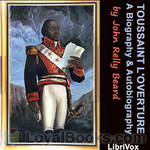 Toussaint L’Ouverture: A Biography and Autobiography
Toussaint L’Ouverture: A Biography and Autobiography
François-Dominique Toussaint L’Ouverture (1743-1803) rose to fame in 1791 during the Haitian struggle for independence. In this revolt, he led thousands of slaves on the island of Hispañola to fight against the colonial European powers of France, Spain and England. The former slaves ultimately established the independent state of Haiti and expelled the Europeans. L’Ouverture eventually became the governor and Commander-In-Chief of Haiti before recognizing and submitting to French rule in 1801... | |
 Toussaint L’Ouverture: A Biography and Autobiography
Toussaint L’Ouverture: A Biography and Autobiography
François-Dominique Toussaint L’Ouverture (1743-1803) rose to fame in 1791 during the Haitian struggle for independence. In this revolt, he led thousands of slaves on the island of Hispañola to fight against the colonial European powers of France, Spain and England. The former slaves ultimately established the independent state of Haiti and expelled the Europeans. L’Ouverture eventually became the governor and Commander-In-Chief of Haiti before recognizing and submitting to French rule in 1801... | |
By: John Robert Hutchinson (1858-1921) | |
|---|---|
 Quest of the Golden Pearl
Quest of the Golden Pearl
A classic boys' adventure story, with two intrepid boys pursuing a jewel thief despite deadly perils and a haunted temple on a desolate island. The book has been made into an online game for modern-day treasure hunters. - Summary by Lynne Thompson | |
By: John S. C. Abbott (1805-1877) | |
|---|---|
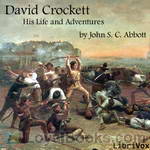 David Crockett: His Life and Adventures
David Crockett: His Life and Adventures
David "Davy" Crockett (August 17, 1786 – March 6, 1836) was a celebrated 19th century American folk hero, frontiersman, soldier and politician. He is commonly referred to in popular culture by the epithet “King of the Wild Frontier.” He represented Tennessee in the U.S. House of Representatives, served in the Texas Revolution, and died at the Battle of the Alamo. This narrative attempts faithfully to record the influences under which David Crockett was reared and the incidents of his wild and wondrous life... | |
By: John Thomas McIntyre (1871-1951) | |
|---|---|
 Ashton-Kirk, Secret Agent
Ashton-Kirk, Secret Agent
Those who have read "Ashton-Kirk, Investigator" will recall references to several affairs in which the United States government found the investigator's unusual powers of inestimable service. In such matters, tremendous interests often stand dangerously balanced, and the most delicate touch is required if they are not to be sent toppling. As Ashton-Kirk has said: "When a crisis arises between two of the giant modern nations, with their vast armies, their swift fleets, their dreadful engines of war, the hands which control their affairs must be steady, secret, and sure... | |
By: John W. Campbell (1910-1971) | |
|---|---|
 The Ultimate Weapon
The Ultimate Weapon
The star Mira was unpredictably variable. Sometimes it was blazing, brilliant and hot. Other times it was oddly dim, cool, shedding little warmth on its many planets. Gresth Gkae, leader of the Mirans, was seeking a better star, one to which his "people" could migrate. That star had to be steady, reliable, with a good planetary system. And in his astronomical searching, he found Sol.With hundreds of ships, each larger than whole Terrestrial spaceports, and traveling faster than the speed of light, the Mirans set out to move in to Solar regions and take over... | |
By: John William Norie (1772-1843) | |
|---|---|
 Piloting Directions for the Gulf of Finland
Piloting Directions for the Gulf of Finland
Norie's series of piloting and sailing directions was something of a staple in the chart-room of 19th century British (and other) merchant vessels. The description of landmarks and ports, as well as the rules and regulations provide another viewpoint to an earlier age. Please note that these piloting directions are rather completely out of date. They are given here for purposes of historical interest only, and should not be used for navigation purposes. | |
By: Johnston McCulley (1883-1958) | |
|---|---|
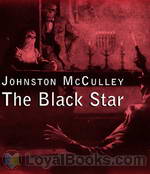 The Black Star
The Black Star
The Black Star was a master criminal who took great care to never be identifiable, always wore a mask so nobody knew what he looked like, rarely spoke to keep his voice from being recognized, and the only mark left at the scenes of the crimes which he and his gang committed were small black stars which were tacked as a sign of their presence, and an occasional sarcastic note to signify his presence and responsibility. Even those who worked for him knew nothing of him, all of which were making his crimes virtually unsolvable... | |
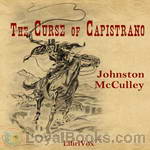 The Curse of Capistrano
The Curse of Capistrano
The Curse of Capistrano by Johnston McCulley is the first work to feature the fictional character Zorro (zorro is the Spanish word for fox). The story was later republished under the name The Mark of Zorro. Senor Zorro is deemed an outlaw as he fights those in authority while seeking justice for the oppressed. He also woos and captures the heart of the lovely Senorita Lolita, but her father would see her married to the rich Don Diego Vega. Meanwhile, the ever persistent Sgt. Gonzales is closing in on our lovers and would means to see the end of Senor Zorro. | |
 Curse of Capistrano (Dramatic Reading)
Curse of Capistrano (Dramatic Reading)
The Curse of Capistrano is the first work to feature the fictional character Zorro . The story was later republished under the name The Mark of Zorro. The outlaw Zorro is Public Enemy #1 in southern California during the period of Mexican rule. But he's not a bad guy, really - he fights for justice for the oppressed. And when he meets the lovely Lolita, daughter of Don Pedro, who is on the governor's bad side, he has even more reason to fight. But she's being wooed by the rich and influential but wimpy Don Diego... | |
 Mark of Zorro
Mark of Zorro
In Spanish California, a troubling pattern had developed. The natives were reduced to peasants, the Franciscan friars that ministered to them were derided, and the only people who mattered were the caballeros – who styled themselves as knights of the New World. These men strutted about in elegant clothes, riding magnificent horses, and sporting rapiers at their sides that they were quick to draw if they felt their honor was affronted. Into this world burst Zorro . A later-day Robin Hood, he stole from the rich and gave to the poor, but he also took it upon himself to punish men who had notably abused others... | |
By: Jonathan Swift (1667-1745) | |
|---|---|
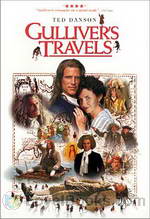 Gulliver's Travels
Gulliver's Travels
Comprised of four parts, Gulliver’s Travels documents the bizarre, yet fascinating voyages of Lemuel Gulliver as he makes his way through several uncharted destinations, experiencing the lives of the small, the giant, the scientific, and downright eccentric societies. Narrated in first person, Swift successfully portrays Gulliver’s thoughts and reactions as he faces struggles of integration throughout his travels. Beginning with the introduction of Gulliver, an educated ship’s surgeon, who after a series of unfortunate events is victim to repeated shipwrecks, desertions, and set adrift... | |
By: Joseph A. Altsheler (1862-1919) | |
|---|---|
 Last Rebel
Last Rebel
Arthur West has been taken as a prisoner of war by Colonel Hetherhill of the Confederate States of America, and imprisoned at Fort Defiance, where an oddly small number of soldiers are stationed. More odd than the size of the fort's company, however, is the fact that the Civil War ended thirty years prior to West's capture. This is the story of West's attempts to regain his freedom. - Summary by David Gore | |
By: Joseph Alexander Altsheler (1862-1919) | |
|---|---|
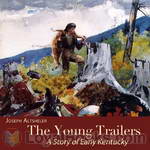 The Young Trailers: A Story of Early Kentucky
The Young Trailers: A Story of Early Kentucky
This is the story of Henry Ware, a young boy living in the wilds of the Kentucky frontier of the 1700's. The story follows Henry as he helps to establish a frontier outpost, is captured by an Indian tribe, and ultimately ensures the safety and security of a band of settlers against the warring Shawnee Indians. The Young Trailers is action packed and brings to life the adventures that awaited the early settlers as they traversed into the endless forests of the American frontier. | |
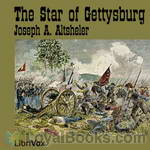 The Star of Gettysburg
The Star of Gettysburg
The Army of Northern Virginia, still victorious after three hard years of fighting, capitalize on their victories at Fredericksburg and Chancellorsville, and a young Harry Kenton, is an eyewitness to the Confederate invasion of the north, culminating in the epic three-day struggle at Gettysburg, Pennsylvania, where Robert E. Lee puts into place a strategy that will end the war, or shatter his army. (Introduction by Robert Fletcher) | |
 Rock of Chickamauga
Rock of Chickamauga
"The Rock of Chickamauga," presenting a critical phase of the great struggle in the west, is the sixth volume in the series, dealing with the Civil War, of which its predecessors have been "The Guns of Bull Run," "The Guns of Shiloh," "The Scouts of Stonewall," "The Sword of Antietam" and "The Star of Gettysburg." Dick Mason who fights on the Northern side, is the hero of this romance, and his friends reappear also. | |
 Scouts of Stonewall
Scouts of Stonewall
In this third book of Joseph Altsheler's Civil War series, Harry Kenton, a lieutenant in the Southern Army, is on scout patrol in the Shenandoah Valley. He has attracted the notice of the great General Stonewall Jackson after his regiment, the Invincibles of South Carolina, suffered great losses at the Battle of Bull Run. As the war continues, Harry meets each challenge that he faces with his close friends and fellow warriors. | |
 Shades of the Wilderness
Shades of the Wilderness
"The Shades of the Wilderness" is the seventh book of the Civil War Series by Joseph A. Altsheler. Picking up where "The Star of Gettysburg" left off, this story continues the Civil War experiences of Harry Kenton and his friends in the Southern army, from the retreat after Gettygurg, to Richmond, and then through the battles of the Wilderness and Spottsylvania, to Robert E. Lee's heroic stand during the siege of Petersburg. Other books in the Civil War series are: "The Guns of Bull Run," "The Guns of Shiloh," "The Scouts of Stonewall," "The Sword of Antietam", "The Star of Gettysburg","The Rock of Chickamauga", and "The Tree of Appomattox." | |
 Hunters of the Hills
Hunters of the Hills
"The Hunters of the Hills" is the first volume of a series dealing with the great struggle of France and England and their colonies for dominion in North America, culminating with the fall of Quebec. It is also concerned to a large extent with the Iroquois, the mighty league known in their own language as the Hodenosaunee, for the favor of which both French and English were high bidders. In his treatment of the theme the author has consulted many authorities, and he is not conscious of any historical error. | |
 Tree of Appomattox
Tree of Appomattox
"The Tree of Appomattox" concludes the series of connected romances dealing with the Civil War, begun in "The Guns of Bull Run," and continued successively through "The Guns of Shiloh," "The Scouts of Stonewall," "The Sword of Antietam," "The Star of Gettysburg," "The Rock of Chickamauga" and "The Shades of the Wilderness" to the present volume. It has been completed at the expense of vast labor, and the author has striven at all times to be correct, wherever facts are involved. So far, at least, no historic detail has been challenged by critic or reader... | |
By: Joseph Conrad (1857-1924) | |
|---|---|
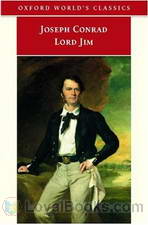 Lord Jim
Lord Jim
This story opens on a ship crowded with pilgrims traveling from Singapore to Mecca for the hajj. A young Englishman is the vessel's first mate. This is his first job and it is something that he has longed for all his life—to be on board a ship that sails the seven seas. One night as the ship sails through the calm waters of the Arabian Sea, it mysteriously begins to shudder. The crew, including the young first mate, believe that it is about to sink. They decide to strike out for themselves in a life-boat, abandoning the passengers... | |
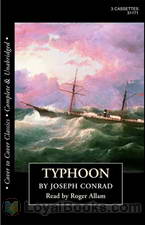 Typhoon
Typhoon
First published in 1902 as a serial in Pall Mall Magazine, the adventure novel follows the disrupting events onboard a steamboat after it takes a perilous course at sea, which triggers a state of mayhem onboard the steamer. Furthermore, the incident prompts the crew to gradually reveal their true nature which is brought to light in the time of crisis. Interestingly, the tale is believed to possess some autobiographical elements taken from Conrad’s own experiences at sea, which provide the novel with a strong foundation, as he effectively uses personification, imagery, and descriptive language to accurately illustrate the danger and chaos instigated by a powerful storm at sea... | |
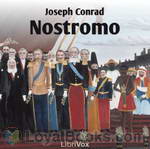 Nostromo
Nostromo
Señor Gould is a native Costaguanan of English descent who owns the silver-mining concession in Sulaco. He is tired of the political instability in Costaguana and its concomitant corruption, and puts his weight behind the Ribierist project, which he believes will finally bring stability to the country after years of misrule and tyranny by self-serving dictators. Instead, the silver mine and the wealth it has generated become a magnet for local warlords to fight over, plunging Costaguana into a new round of chaos... | |
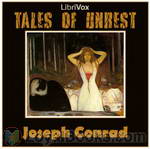 Tales of Unrest
Tales of Unrest
Tales of Unrest (1898) is the first collection of short stories by Joseph Conrad published in his lifetime.Joseph Conrad (1857–1924), a Polish-born English novelist, was a master in the formats of long short story and novella, a form of story longer than conventional short story but shorter than a novel. Some of Conrad's most acclaimed works have been written in these formats, most notably Heart of Darkness (1899).Tales of Unrest contains five stories; Karain: A Memory (written 1897; read by Jhiu), The Idiots (1896; read by Ann Boulais), An Outpost of Progress (1896; read by Kristine Bekere), The Return (1897; read by Raerity) and The Lagoon (1896; read by David Lazarus)... | |
 An Outcast Of The Islands
An Outcast Of The Islands
An Outcast of the Islands is the second novel by Joseph Conrad, published in 1896, inspired by Conrad's experience as mate of a steamer, the Vigar. The novel details the undoing of Peter Willems, a disreputable, immoral man who, on the run from a scandal in Makassar, finds refuge in a hidden native village, only to betray his benefactors over lust for the tribal chief's daughter. The story features Conrad's recurring character Tom Lingard, who also appears in Almayer's Folly (1895) and The Rescue (1920), in addition to sharing other characters with those novels... | |
 Under Western Eyes
Under Western Eyes
Under Western Eyes (1911) is a novel by Joseph Conrad. The novel takes place in St. Petersburg, Russia, and Geneva, Switzerland, and is viewed as Conrad's response to the themes explored in Crime and Punishment, Conrad being reputed to have detested Dostoevsky. It is also, some say, Conrad's response to his own early life; his father was a famous revolutionary imprisoned by the Russians, but, instead of following in his father's footsteps, at the age of sixteen Conrad left his native land forever... | |
 Almayer's Folly
Almayer's Folly
A European businessman and his Malayan wife have a daughter, Nina. A Malayan prince comes to do trade with the businessman and falls in love with the daughter. Conflict arises when other influences cause distrust in the business partnership and the daughter runs off to be with the prince. | |
By: Joseph E. Badger, Jr (1848-1909) | |
|---|---|
 The Lost City
The Lost City
Bruno and Waldo Gillespie are orphaned brothers living with the extremely eccentric Professor Phaeton Featherwit. One day they set off in one of the professor’s machines to investigate a tornado at close range and accidentally get sucked into it! They are then transported by the tornado and find themselves in a barren, uncharted wasteland wherein lies a city– a long lost Aztec city! Find out what happens next to the brothers and the professor in this harrowing and exhilarating adventure! | |
By: Joseph Hocking (1860-1937) | |
|---|---|
 Weapons of Mystery
Weapons of Mystery
Justin Blake receives an invitation from his old school-fellow Tom Temple to join him and his family for the Christmas holidays in Yorkshire. Having no other plans, he decides to go. Though he is normally much the opposite of what would be called a lady's man, he falls instantly in love with Miss Forrest, one of the guests, who had already shared his train compartment on the way. When he meets the mysterious Herod Voltaire and finds that he must protect the girl from him and his weapons of mystery, the adventure begins. | |
By: Joseph Plumb Martin (1760-1850) | |
|---|---|
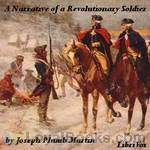 A Narrative of a Revolutionary Soldier
A Narrative of a Revolutionary Soldier
Joining the Continental Army as a teenager, Joseph Plumb Martin spent the next eight years fighting in the Revolutionary War as an enlisted man. His memoirs tell in detail his experiences during that time...the bitter cold, hunger, loss of life, long marches, and fear of battle. He also includes tales of fishing, hunting, and other activities...including encounters with a "saucy miss". His narrative reveals much about American life at the time and is one of the fullest and best accounts of the Revolutionary War, presented from a private's point of view.The book has been later republished under the names Private Yankee Doodle and Memoir of a Revolutionary Soldier. | |
By: Joseph Sheridan LeFanu (1814-1873) | |
|---|---|
 Wylder's Hand
Wylder's Hand
The marriage of Mark Wylder and Dorkas Brenden is supposed to end a history of arguments between the two families. However, both people involved do not seem to like the idea. Before the wedding, Mark disappears. But to where? And how will the people around him react to his disappearance? | |
By: Joseph Smith Fletcher (1863-1935) | |
|---|---|
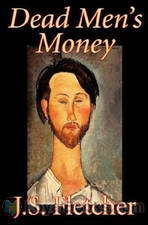 Dead Men's Money
Dead Men's Money
A naïve but sincere young lawyer's assistant who only dreams of marrying his childhood sweetheart and yearns to have a home and family with her. His sharp witted boss keeps the firm going by dint of shrewd business sense and legal talent. When the assistant accidentally stumbles into a murder case, the scene is set for events that change all their lives. Dead Men's Money by Joseph Smith Fletcher was published in 1920, the era considered to be the Golden Age of detective fiction. Writers like Agatha Christie, Ngaio Marsh, Dorothy L... | |
 Scarhaven Keep
Scarhaven Keep
The northern English sea coast provides a compelling backdrop for this genre of writing; a mysterious disappearance, a love interest, and plot twists 'se mijotent' to produce an intriguing read. | |
By: Joseph Spillman (1842-1905) | |
|---|---|
 The Shipwreck A Story for the Young
The Shipwreck A Story for the Young
| |
By: Josephine Chase (-1931) | |
|---|---|
 Grace Harlowe's Overland Riders Among the Kentucky Mountaineers
Grace Harlowe's Overland Riders Among the Kentucky Mountaineers
| |